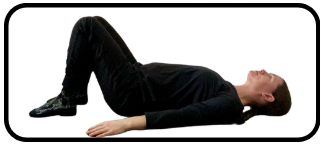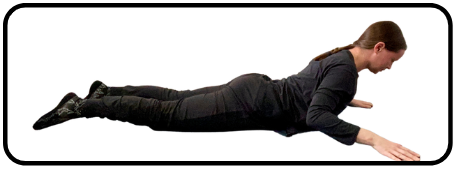The Four Fundamentals of Exercising with Osteoporosis
Being told that you have osteoporosis, as defined by the World Health Organization as “a disease characterized by low bone density and microarchitectural deterioration of bone tissue”1, can be a scary thing to hear. It is usually a time when you are taking in a lot of information from various healthcare professionals (not to mention family, friends, google and social media). This tidal wave of information can often lead to feelings of fear and indecision.
As a physiotherapist, my role in helping patients with osteoporosis is about providing guidance and clarity within this tidal wave of information. This is especially true regarding information about what to do when exercising after an osteoporosis diagnosis. I aim to provide my patients with individualized action plans regarding adding in new exercises and modifying current routines to optimize bone health and prevent falls and fractures.
There are wonderful guidelines and research articles regarding the role of exercise and physiotherapists in managing osteoporosis. Sometimes when reading through these guidelines, it can be confusing about how to apply these guidelines to your own routine and life. People with recent (or not-so-recent) osteoporosis diagnoses are often fearful of doing the wrong thing and injuring themselves as a result.
Because of this uncertainty and fear they then either do nothing, or feel anxious throughout their exercise efforts.
Here are the four fundamental exercise components that I consider when prescribing exercise programs for my patients with osteoporosis. Below are descriptions of these four components that I hope allows you to feel confident in the path to take when exercising with osteoporosis.
Please note that this blog is for informational purposes only and should not be considered, or take the place of medical advice.
The Four Fundamentals of Exercising with Osteoporosis
Fundamental 1# - Full Body Strengthening Exercises
A general full body strengthening program is important for supporting your bones, training the muscles that prevent falls and fractures after falling, as well as reaping the non-osteoporosis health benefits of strengthening exercises.
A full body strength routine is optimal when it includes at least one exercise from each of the following categories, legs, pulling muscles and pushing muscles.
Examples of exercises for each category include:
Legs - sit-to-stands, squats, step-ups, lunges, split squats, bridges
Pulling - resistance band pull-aparts, rows, pull-up variations
Pushing - standard or modified overhead press, chest press, push-ups
A guiding principle when exercising with osteoporosis is to limit repetitive or sustained forward flexion or twisting of the spine. Considering this, when selecting these exercises, include movements that allow you to maintain a straight or extended spine during the set-up, movement and exiting of the exercise position.
In order for your strengthening routine to truly build strength try to select exercises that are adequately challenging. The fear aspect of osteoporosis can often lead to exercise selections that are lighter than the objects you are lifting in your day-to-day life and not hard enough to stimulate the strengthening benefits.
On a similar theme gradually increase the difficulty of your strengthening routine (usually done by more reps or heavier weight). This is vital in the process of building stronger muscles. For optimal benefits complete two strength sessions per week for each of the categories of legs, pulling and pushing.
Fundamental #2 - Back Strengthening Exercises
The main benefit of having strong back muscles is that this allows our back muscles to stay engaged and active throughout the day to support our spine and allows you to do the activities that you want and need to do in positions that are lower risk of leading to a fracture.
A secondary benefit of having strong back muscles is that it helps to support an upright and tall-standing posture when walking. This is a position from which it is easier to keep your balance, meaning less likely to trip, fall and possibly fracture.
When building strong back muscles, it is important to find an exercise that is within your current abilities while also being challenging. From this starting point, repeat your choice of exercise 2x/week, gradually increasing the difficulty level as your back muscles adapt by getting stronger and stronger.
Here are three exercises of increasing difficulty level that target the back muscles.
#1 Supine isometric back extension
Gently press the back of your head, shoulders and upper back directly down into the floor, without any actual movement occurring.
Hold this position for 3 seconds and then relax, repeat and gradually increase the duration of the hold.
#2 Arms-assisted prone back extension
Using your arms to assist, raise up using your back muscles and hold for 1 to 3 seconds before lowering back down.
Repeat starting at 3 sets of 5 repetitions and gradually increase.
#3 Prone Superman
Keeping your gaze down, arch your back to raise up your legs and upper body and hold for 1 to 3 seconds before lowering back down.
Repeat starting at 3 sets of 5 repetitions and then gradually increase.
Fundamental #3 - Balance Exercises
Sometimes the obvious answer is the right answer.
To help prevent a fall and fracture following a diagnosis of osteoporosis it is important to practice balance exercises. This way if you find yourself off-balance due to catching your foot on an object or walking on an uneven surface (hello snowy sidewalks), muscle memory can kick in and your body will know what to do to keep itself upright.
Like with the strengthening exercises above, a key when training your balance is finding an activity that is challenging. This means that, while ensuring you are safe, you are wobbling and have to work to keep your balance when training this skill. To ensure that while challenging, this practice is also safe, practice in an area free of objects to bump into and also with a solid balance support like a table or wall to use if needed.
Here are some balance exercise ideas. They can be practiced as frequently as daily.
#1 Single leg stance - Practice standing on one foot.
#2 Tandem walk - Practice walking heel-to-toe, one foot in front of the other. This can be done forwards and backwards
#3 Single leg stance with head rotations - While standing on one foot, slowly turn your head to look to one side and then the other.
Fundamental #4 - Impact Exercise
For those with an osteoporosis diagnosis WITHOUT a hip or vertebral low trauma fracture, small amounts of impact exercise can be an effective method for optimizing your bone mineral density. Ideally complete impact exercises twice weekly. This is the same recommended frequency as strength training and for ease is usually programmed within a strengthening session.
The aim for this category of exercises is for the impact movement to have a level of force higher than what your body is used to.
Here are some examples of impact exercises:
#1 Foot stomping - In standing, do a marching motion, aiming to make as much noise as possible from your foot stomps.
#2 Heel drops - With your hands on a stable object for balance support, raise up onto your toes. From here drop your heels down in a quick and impactful motion.
#3 Squat jumps - From the bottom portion of a squat, raise up powerfully into a jump and then controlled landing.
As with the strengthening and balance exercises, the key is finding the version that is both safe and adequately challenging to be effective for you!
If this type of movement is new to you, I recommend starting with a small amount. Try 1 set of 5 repetitions 2x/week and gradually build.
In Summary:
Exercise is a helpful tool in maintaining your quality of life and ability to move with joy after receiving a diagnosis of osteoporosis.
The four categories of exercise I recommend looking into and trying to include are:
#1 - Full Body Strengthening Exercises
#2 - Back Strengthening Exercises
#3 - Balance Exercises
#4 - Impact Exercises
Still feeling uncertain about exercising after your osteoporosis diagnosis, or interested in an individualized osteoporosis exercise program?
As a physiotherapist and certified Bone FitterTM, I offer in-person and virtual (for residents of Ontario) Osteoporosis Physiotherapy sessions out of Reclaim Physiotherapy in Ottawa (Kanata) Ontario.
To see my availability and schedule your Osteoporosis Physiotherapy Assessment click on the button below!
1 Fragility Fractures. https://www.who.int/news-room/fact-sheets/detail/fragility-fractures. World Health Organization. Accessed Oct. 24th, 2024.


